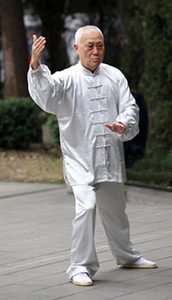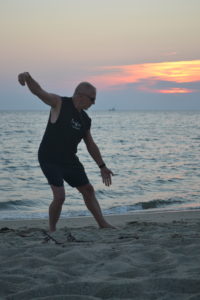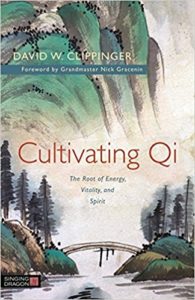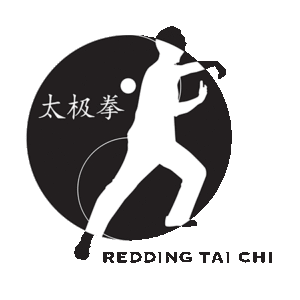Slanted FlyingJournal of Tai Chi Chuan
Training
Multitasking? The Mind, Attention, and Intention in Taijiquan
Neuroscientists describe this as having the movements mapped to the brain, creating a shorthand between thinking and doing. You learn parts of a movement in pieces, and these pieces merge into phrases and longer sequences. Eventually the movements become so natural that you only need the intent to do something, and the body does it, without the need to actively think about the pieces.
The importance of the mind in learning motor skills is confirmed by observable improvements even when a person practices mentally rather than physically. One tip for dancers learning choreography is to watch before trying to do. “You need to get it into your head before your head can direct it to your body” (Miss P, 11/17/2014).
But fighting in martial arts is not choreographed. We may have trained our bodies to move in certain ways, but there are numerous things to pay attention to when interacting with someone else. How can we fight effectively when there are so many things to think about?
First – know yourself. The better we are at our own movements, and therefore the less we need to pay attention to ourselves, the more we can use the brain’s limited resources to pay attention to the interactions with the opponent. If we can group our responses into a single concept, then we will not have multiple items to divide our attention.

Some practitioners group their own body responses into the feeling of being centered (中定 zhong ding). As long as that feeling remains, then the ways that they are moving do not draw their attention. If one looses that feeling, then they know that they may be vulnerable, and they may need to pay attention to their own body in order to correct the mistake(s) before the opponent takes advantage.
Other practitioners use the image of being like a ball floating on water. The ball is always centered due to its round shape, but it also moves freely, and instantly, in response to the opponent’s touch. This image simplifies the practitioner’s movements; with only this one intent, the mind is free to pay attention to other things. We want things to “feel right” so that the specifics do not need to be focused on. We want to be one resilient, agile, comfortable, coordinated whole.
In both of the above examples, the movements learned in solo forms training should be the ingrained, routine method of movement (the “muscle memory”). For a skilled practitioner, these would no longer need to be focused on when interacting with someone else.
If ones routine method of movement is “when one part moves, all parts move,” then this will be the method of moving even when it is not specifically being focused on. Also, if one practiced generating power from the feet and legs, and directing the power with the waist to be expressed at the point of contact with an opponent, then that will be how one produces, directs, and expresses power even when it is not being focused on.
Second – know the opponent. Once a practitioner knows themselves, they can focus on their opponent.
If we are comfortable, then we can respond to the opponent’s movements faster, since a comfortable, trained body should be properly aligned and integrated, and ready for both defensive and offensive actions. If we can then focus on having a sensitive feeling that is ready and able to act, then we are not dividing our attention into multiple components needed for immediate responses.
Paying attention to the opponent by using multiple senses helps us increase our awareness of them. In Taijiquan, we want to know the opponent through the sense of touch rather than relying only on sight. An analogy for this is that we want to be like a spider sensing all directions through their web. By touching the web, the spider senses all parts of the web (practitioners sensing the entire opponent through one contact point).
The lack of ability to multitask also makes sense of the need for a calm mind. Extraneous thoughts and emotions only tax our ability to focus our attention on the interactions with the opponents. Occasionally one can focus an emotion into a benefit in a fight, but emotions typically reduce performance. For example, anger can lead to over-aggressiveness; fear triggers our “fight-or-flight” response; low self esteem can result in hesitation; etc.














I do not use Facebook, so I cannot reply directly to Kim Foale above, so I will respond here.
I probably should have given a citation for that. If you are interested in reading more about multitasking studies, Wikipedia gives numerous studies that you can look up. The Wikipedia entry on Human Multitasking gives a different value, quoting Meyer as “often double the time or more”